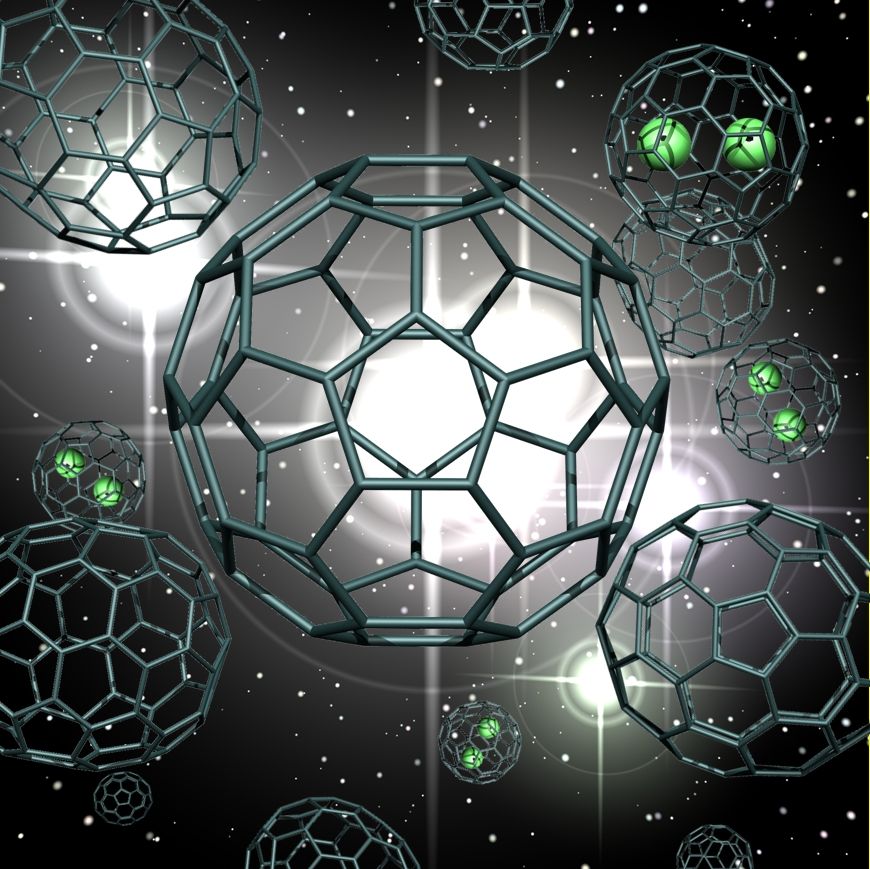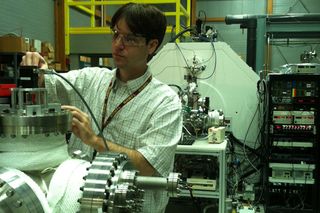Decades Old Mystery of Buckyballs Cracked

This Behind the Scenes article was provided to LiveScience in partnership with the National Science Foundation.
After exploring for 25-years, scientists have solved the question of how the iconic family of caged-carbon molecules known as buckyballs form.
The results from the Florida State University and the National Science Foundation-supported National High Magnetic Field Laboratory, or MagLab, in Tallahassee, Fla., shed fundamental light on the self-assembly of carbon networks. The findings should have important implications for carbon nanotechnology and provide insight into the origin of space fullerenes, which are found throughout the Universe.
Many people know the buckyball, also know as fullerene by scientists, molecule, C60, from the covers of their school chemistry books. Indeed, the molecule represents the iconic image of “chemistry.” But how these often highly symmetric, beautiful molecules with extremely fascinating properties form in the first place has been a mystery. Despite worldwide investigation since the 1985 discovery of C60, fullerene has kept its secrets. How? It’s born under highly energetic conditions and grows ultra fast.

“The difficulty with fullerene formation is that the process is literally over in a flash – it’s next to impossible to see how the magic trick of their growth was performed,” says Paul Dunk, lead author of the work.
In the study, published in Nature Communications at the end of May, the scientists describe their ingenious approach to testing how fullerenes grow. “We started with a paste of pre-existing fullerene molecules mixed with carbon and helium, shot it with a laser, and instead of destroying the fullerenes we were surprised to find they’d actually grown.” The fullerenes were able to absorb and incorporate carbon from the surrounding gas.
By using fullerenes that contained heavy metal atoms in their centers, the scientists showed that the carbon cages remained closed throughout the process. “If the cages grew by splitting open we would have lost the metal atoms, but they always stayed locked inside,” noted Dunk.
Sign up for the Live Science daily newsletter now
Get the world’s most fascinating discoveries delivered straight to your inbox.
The researchers worked with a team of MagLab chemists using the lab’s 9.4 tesla Fourier transform ion cyclotron resonance mass spectrometer to analyze the dozens of molecular species produced when they shot the fullerene paste with the laser. The instrument works by separating molecules according to their masses, allowing the researchers to identify the types and numbers of atoms in each molecule. The process is used for applications as diverse as oil spills, biomarkers, and protein structure.
The buckyball research results will be important for understanding fullerene formation in extraterrestrial environments. Recent reports by NASA showed that crystals of C60 are in orbit around distant suns. This suggests that fullerenes may be more common in the Universe than we thought.
“The results of our study will surely be extremely valuable in deciphering fullerene formation in extraterrestrial environments,” said FSU’s Harry Kroto, a Nobel Prize winner for the discovery of C60 and co-author of the current study.
The results also provide fundamental insight into self-assembly of other technologically important carbon nanomaterials like nanotubes and the new wunderkind of the carbon family, graphene.
Other research collaborators included the CNRS Institute of Materials in France and Nagoya University in Japan.
Editor's Note: The researchers depicted in Behind the Scenes articles have been supported by the National Science Foundation, the federal agency charged with funding basic research and education across all fields of science and engineering. Any opinions, findings, and conclusions or recommendations expressed in this material are those of the author and do not necessarily reflect the views of the National Science Foundation. See the Behind the Scenes Archive.











